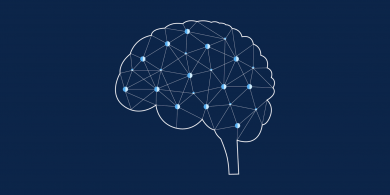Rethinking computing and communication, by combining cell biology with nanotechnology
6 May, 2022
Systems that blend biology with electronics could answer some big questions.
Associate Professor Charles Unsworth started his scientific career with a degree in mathematical physics from the University of Liverpool and a PhD in millimetre wave physics from the University of St. Andrews. The latter led him to work on the hardware for the first passive millimetre wave radar imaging systems for the UK’s Ministry of Defence. But these days, the MacDiarmid Institute Principal Investigator is more likely to be found probing cells at the Centre for Brain Research labs or developing artificial neural networks algorithms in the Department of Engineering Science at the University of Auckland (UoA).
At first glance, it might seem like a surprising path, but it’s one that has given him a breadth of scholarship and expertise from hardware right through to software. After a postdoctoral fellowship in radar signal processing, Associate Professor Unsworth became one of the first Engineering and Physical Sciences Research Council (EPSRC) postdoctoral mobility fellows, applying engineering to the biomedical sciences in the area of epilepsy. “I used very similar techniques in my fellowship at the Royal Hospital of Sick Children in Edinburgh, as I did in my radar work. The only difference was the application – this time, they were being used for studying epilepsy signals in the brain. I went basically from radar signal processing to biomedical signal processing; and signal processing is still a major thread of my research.”
 Associate Professor Unsworth directs a Neural Engineering group at UoA’s Faculty of Engineering which sits at the interface of engineering, neuroscience and computing, and so his projects often cut across disciplines. His group have developed artificial neural networks for novel electronic noses (or e-noses) biosensors with Plant & Food Research which detect molecules in gaseous environments which could find use in everything from the wine industry to biosecurity. These can predict odorants from the electrical signals of ultrasensitive insect olfactory neurons.
Associate Professor Unsworth directs a Neural Engineering group at UoA’s Faculty of Engineering which sits at the interface of engineering, neuroscience and computing, and so his projects often cut across disciplines. His group have developed artificial neural networks for novel electronic noses (or e-noses) biosensors with Plant & Food Research which detect molecules in gaseous environments which could find use in everything from the wine industry to biosecurity. These can predict odorants from the electrical signals of ultrasensitive insect olfactory neurons.
He’s currently collaborating with fellow MacDiarmid Institute Principal Investigator Dr Natalie Plank, on her Marsden funded project, to extend this research into ultrasensitive devices known as electric tongues (e-tongues) to detect human hormones in liquid environments, such as blood, that have point of care applications for GPs and in the home. “It’s a really lovely project,” he says. “Our role in it involves training our artificial neural network models with Natalie’s data, to see if we can identify the specific molecules of interest at picomolar concentrations in their complex liquid environments.”
One major area of focus for Associate Professor Unsworth and his team is the development and application of bespoke in vitro neural chip platforms for neuroscientific discovery. These novel platforms, based on silicon chip devices, provide a means to grow and precisely organise
human brain cells into regular grid arrangements on a patterned biomaterial. “We’re trying to understand how certain cell types communicate, but because cells move around, it’s often very difficult to know exactly what's talking to what,” he explains. “Using biomaterials, optical
methods and multi-electrode arrays (MEAs) built into the chip technology, we can move, remove and organise cells accurately, and stimulate and record from them electronically or with light. We can watch – through image and signal processing – how information propagates cell
by cell around a network.” Originally developed to look at the behaviour and relationships that exist between healthy human neurons and astrocytes, and funded through a Marsden programme grant, he is now extending his technology to understand the communication in both rare
and incurable adult and child brain cancers, supported recently by his James Cook Research Fellowship and funding from the Health Research Council.
It’s been so refreshing to get back to the rockface. There are lot of challenging, fundamental questions to answer.
Associate Professor Charles Unsworth Principal Investigator The University of Auckland
These chip platforms have also seen Associate Professor Unsworth join forces with another MacDiarmid Institute colleague, Professor Bill Williams from Massey University, on a research project into future computing. “Asking how cells communicate with each other is one thing, but I’ve long been interested in how they then use that information to solve problems.” The goal of this project is to combine Professor Williams’ work on gels with Associate Professor Unsworth’s neural platforms, to produce 2D organic networks. “The gel-like extracellular matrix that surrounds cells in the body plays an important role in communication, so we think that by incorporating some of Bill’s gels, we could make the whole network more realistic. We might even be able to get them to perform simple calculations,” he says.
Performing experimental research has become very difficult these days: “Like everyone here in Auckland, COVID has had a big impact on our projects,” explains Unsworth. “We’ve only just been able to get back into the lab.” But, he says, they’re excited to make progress. “It’s been so refreshing to get back to the rockface, as it were. There are lot of challenging, fundamental questions to answer about computation within cells. I’m grateful that the MacDiarmid Institute has given us the opportunity to explore that.”


